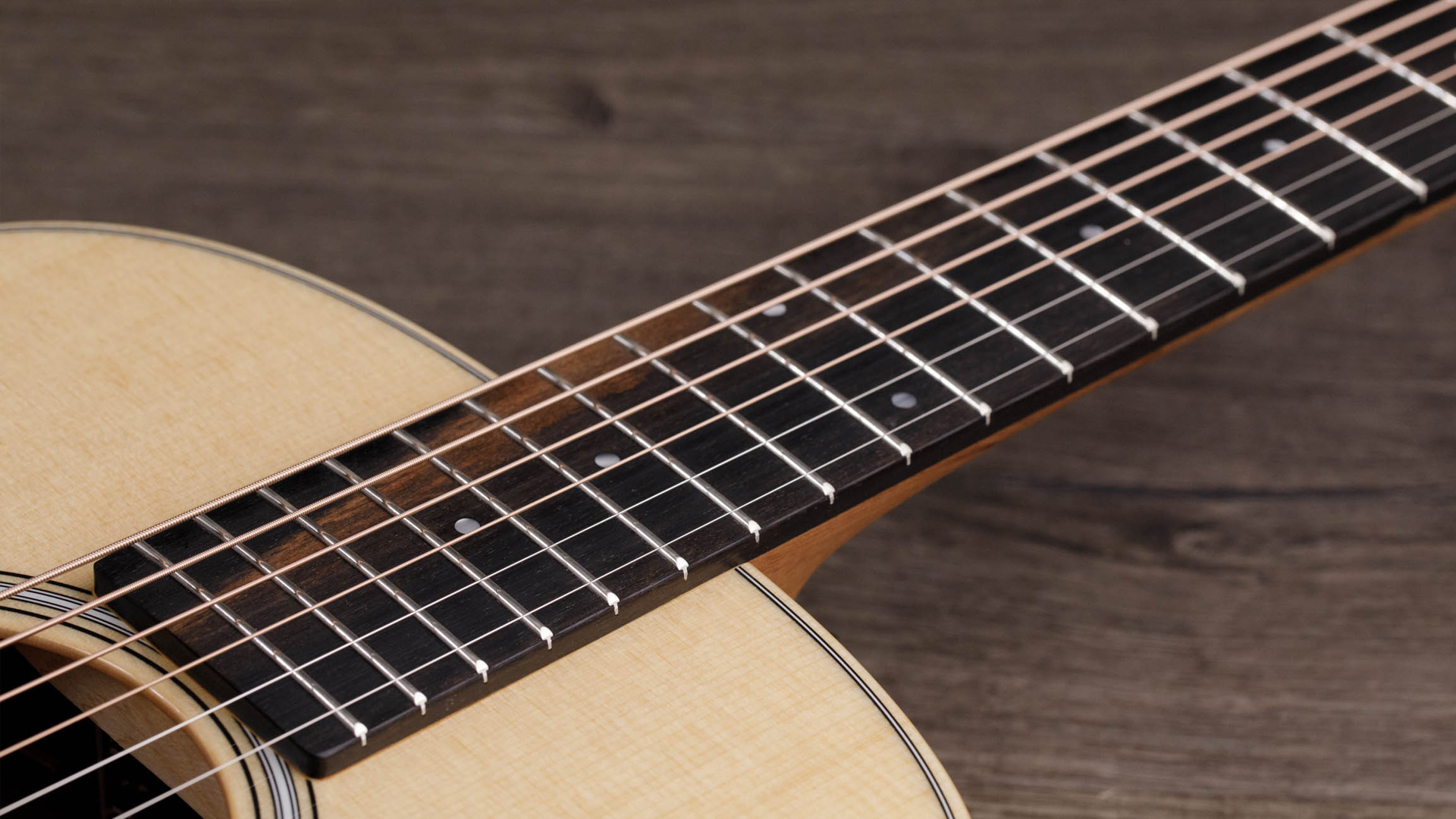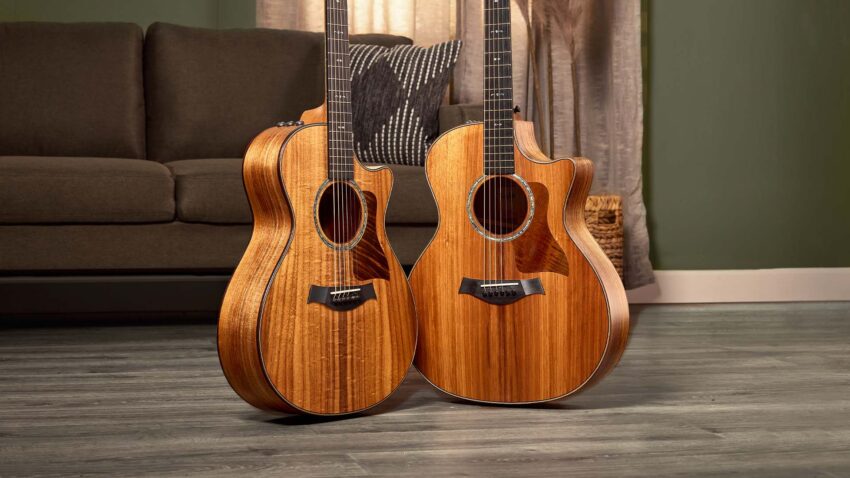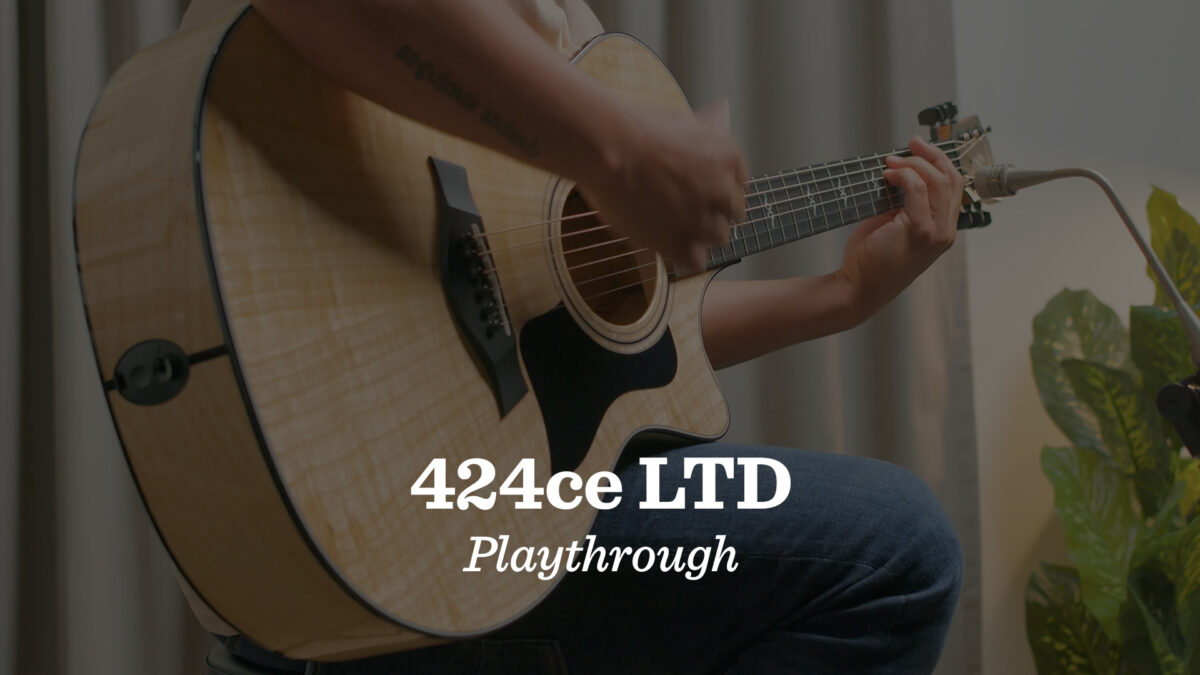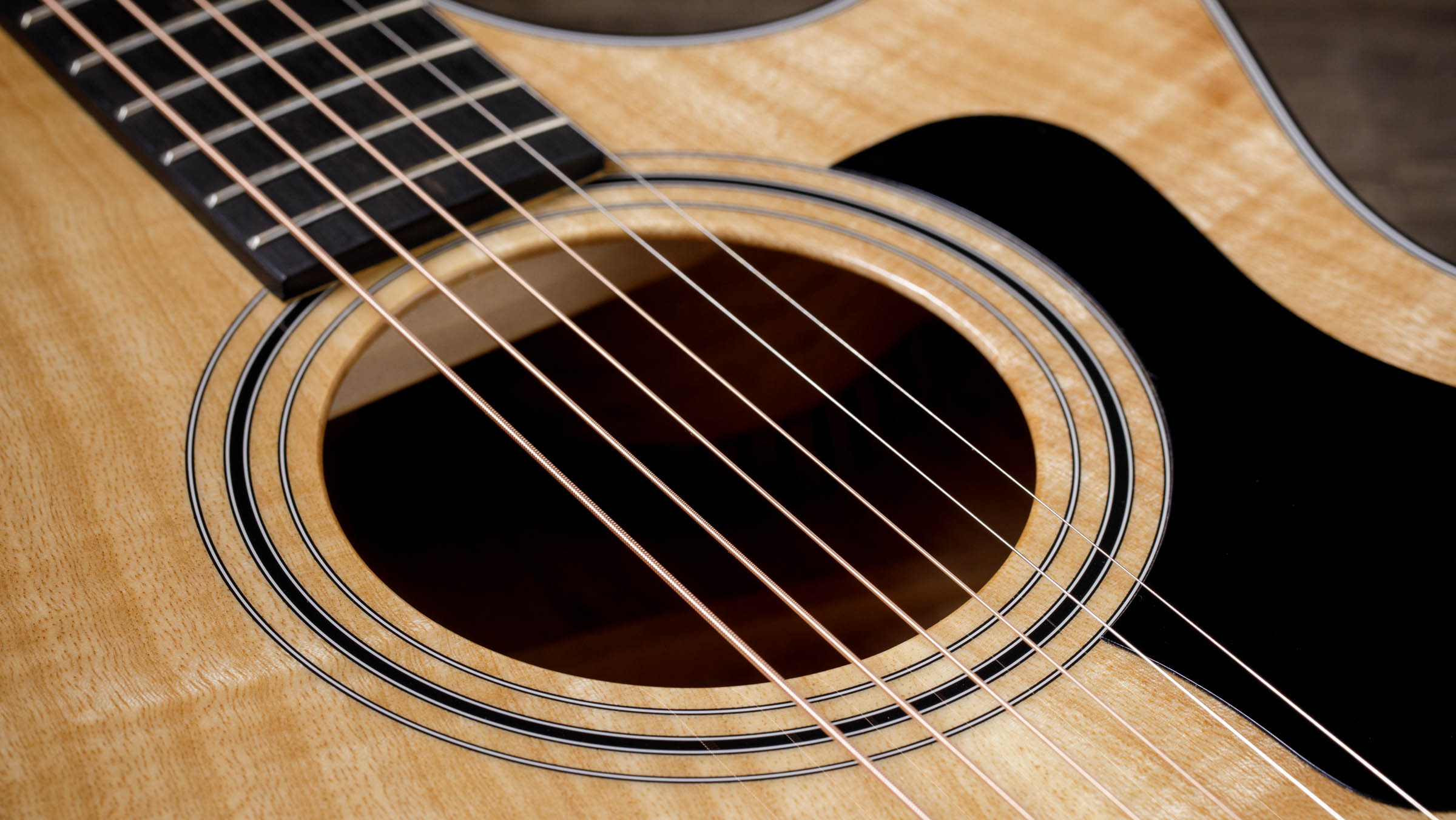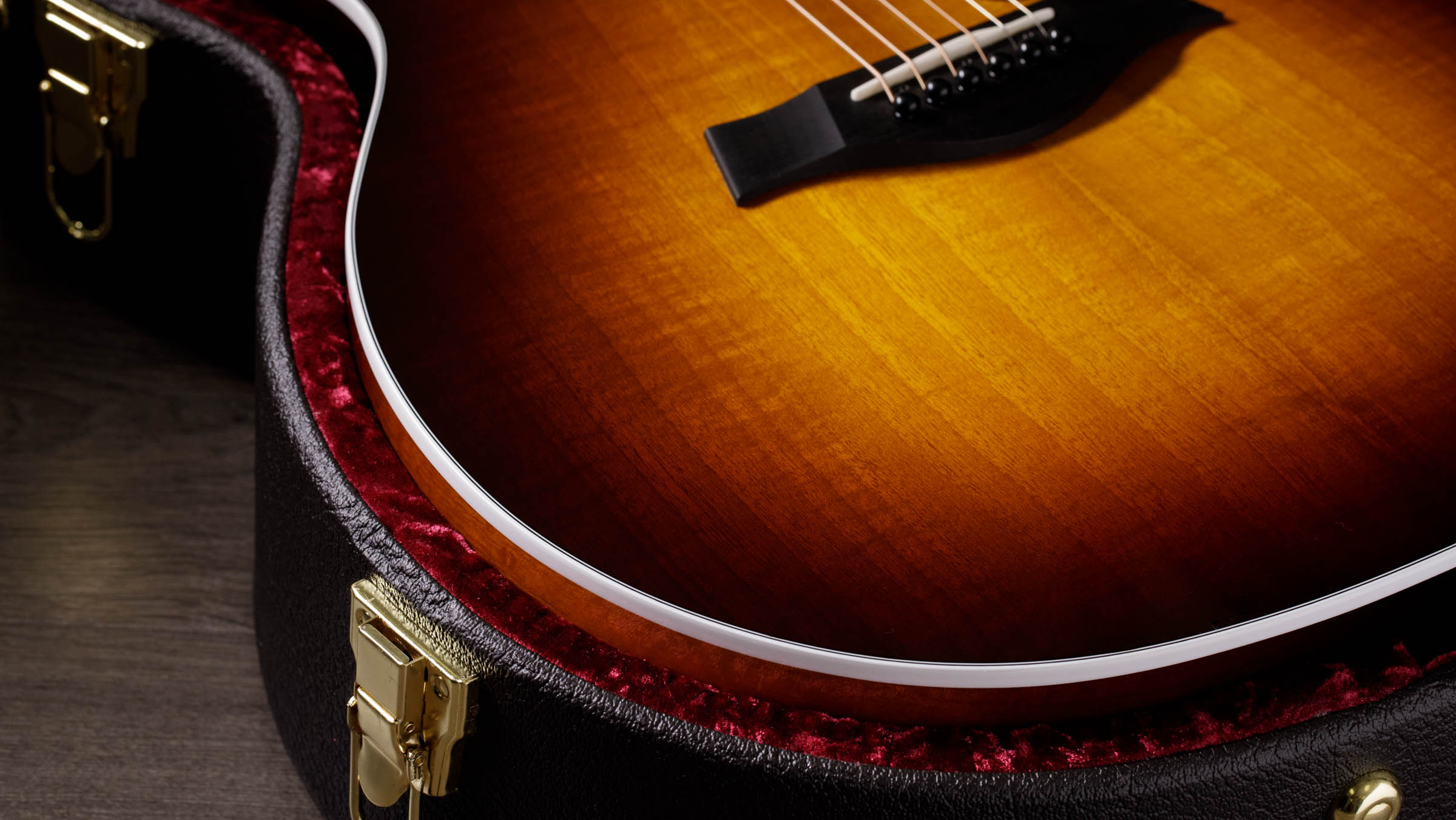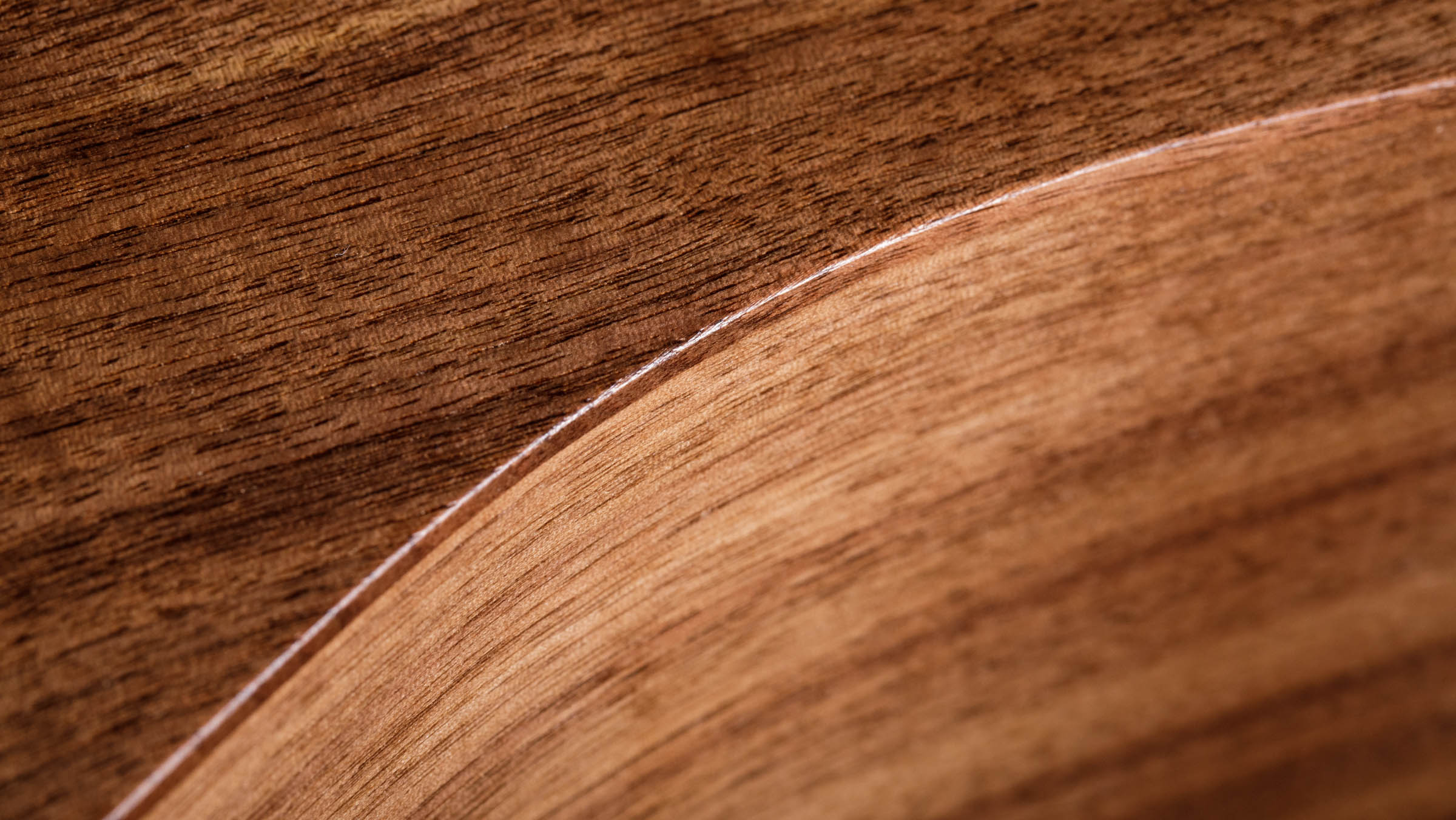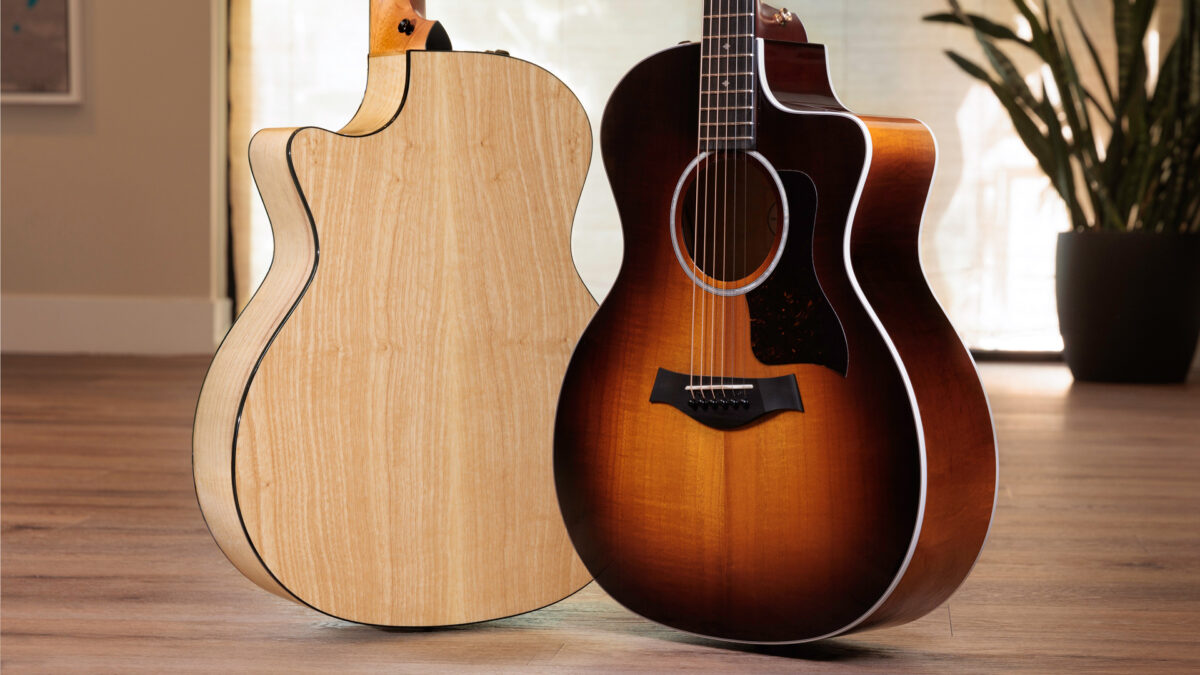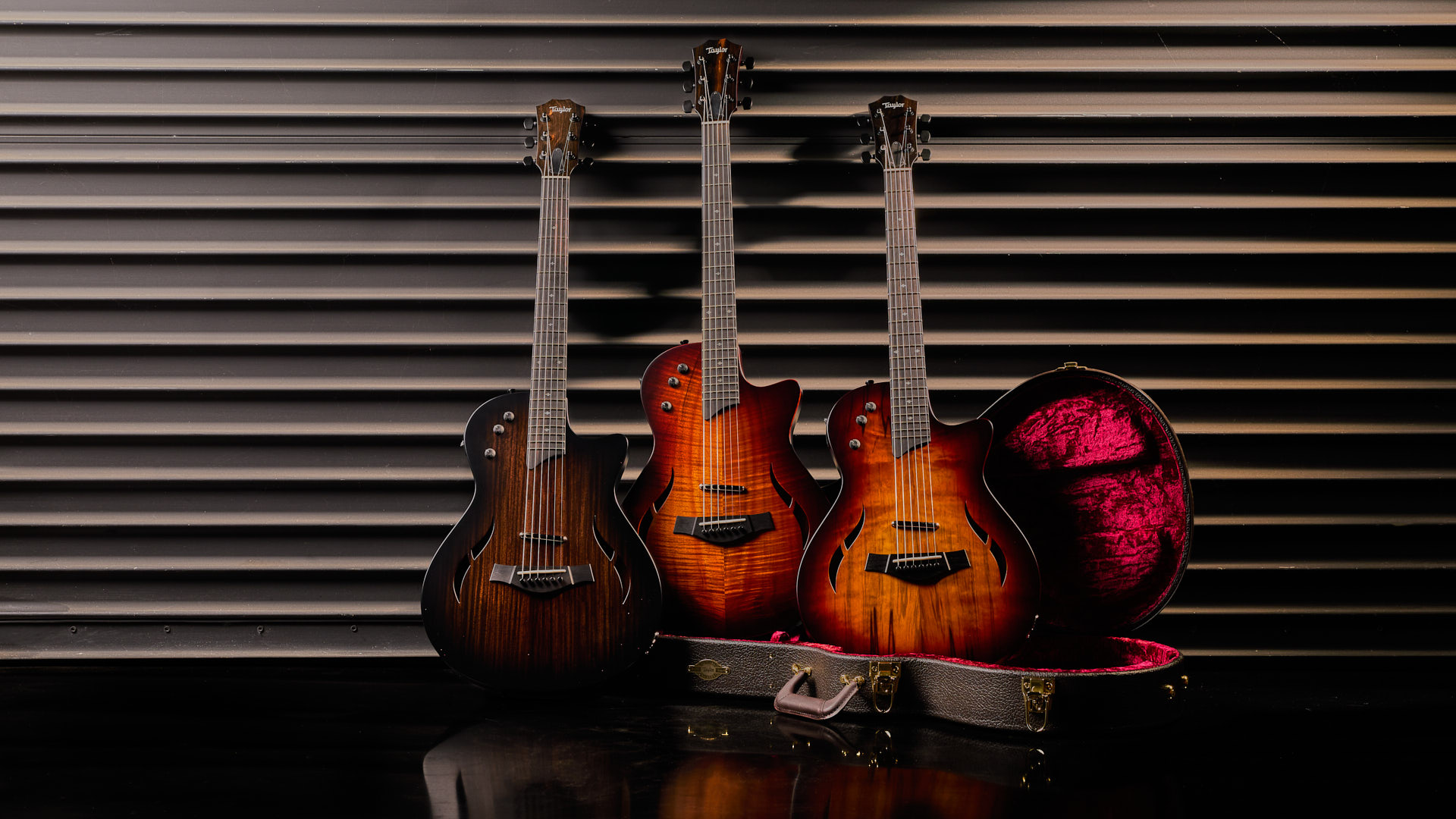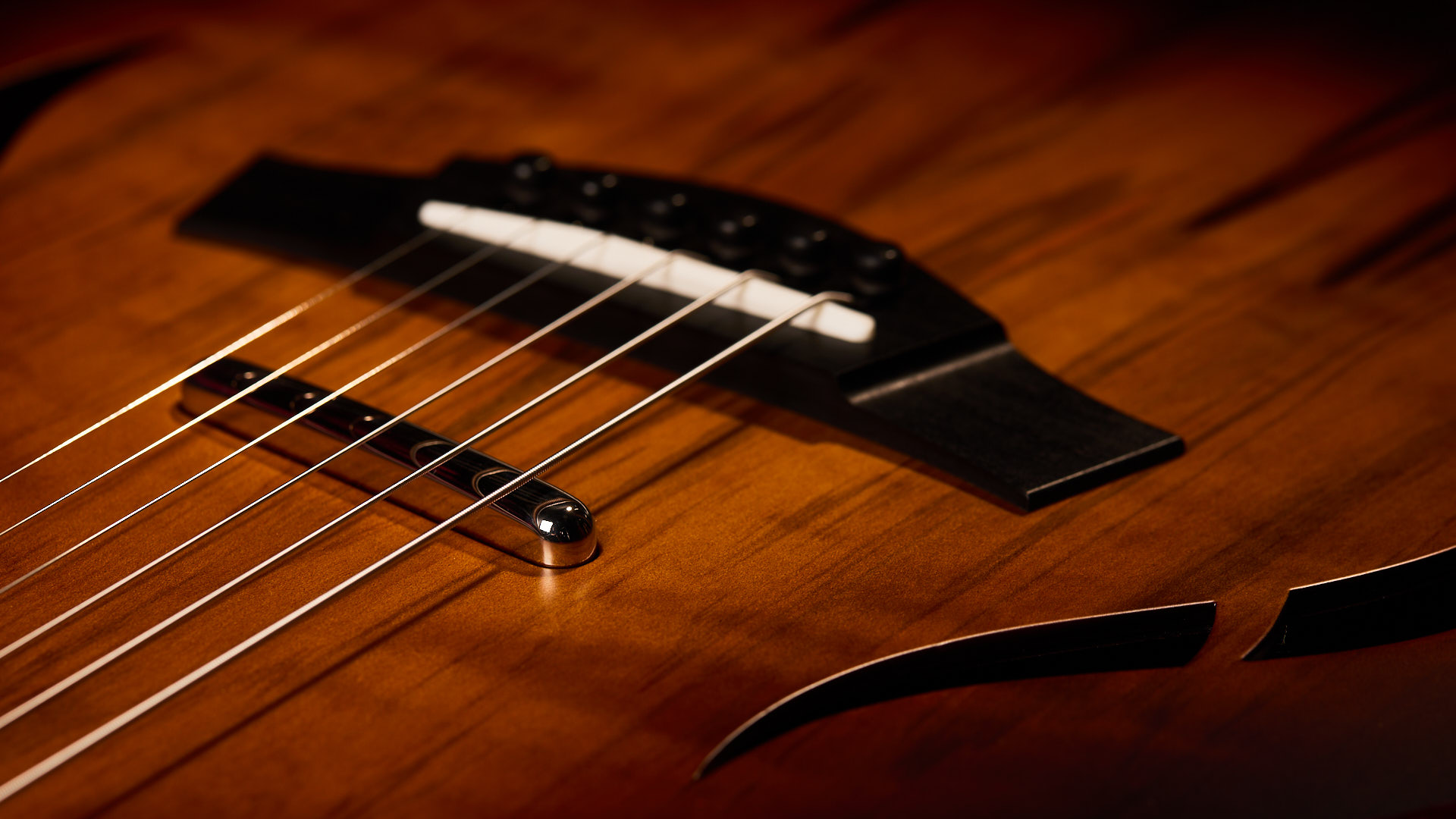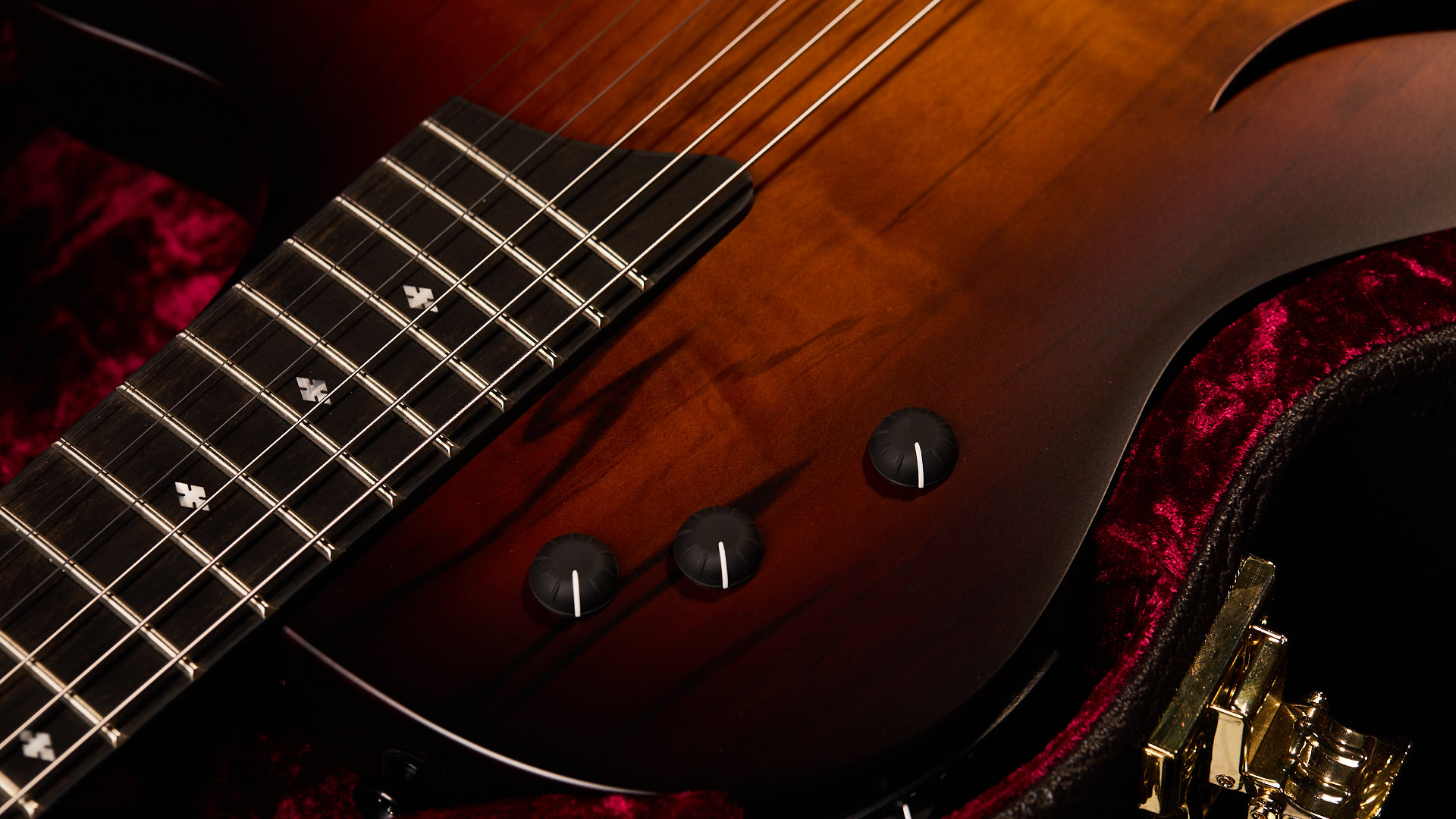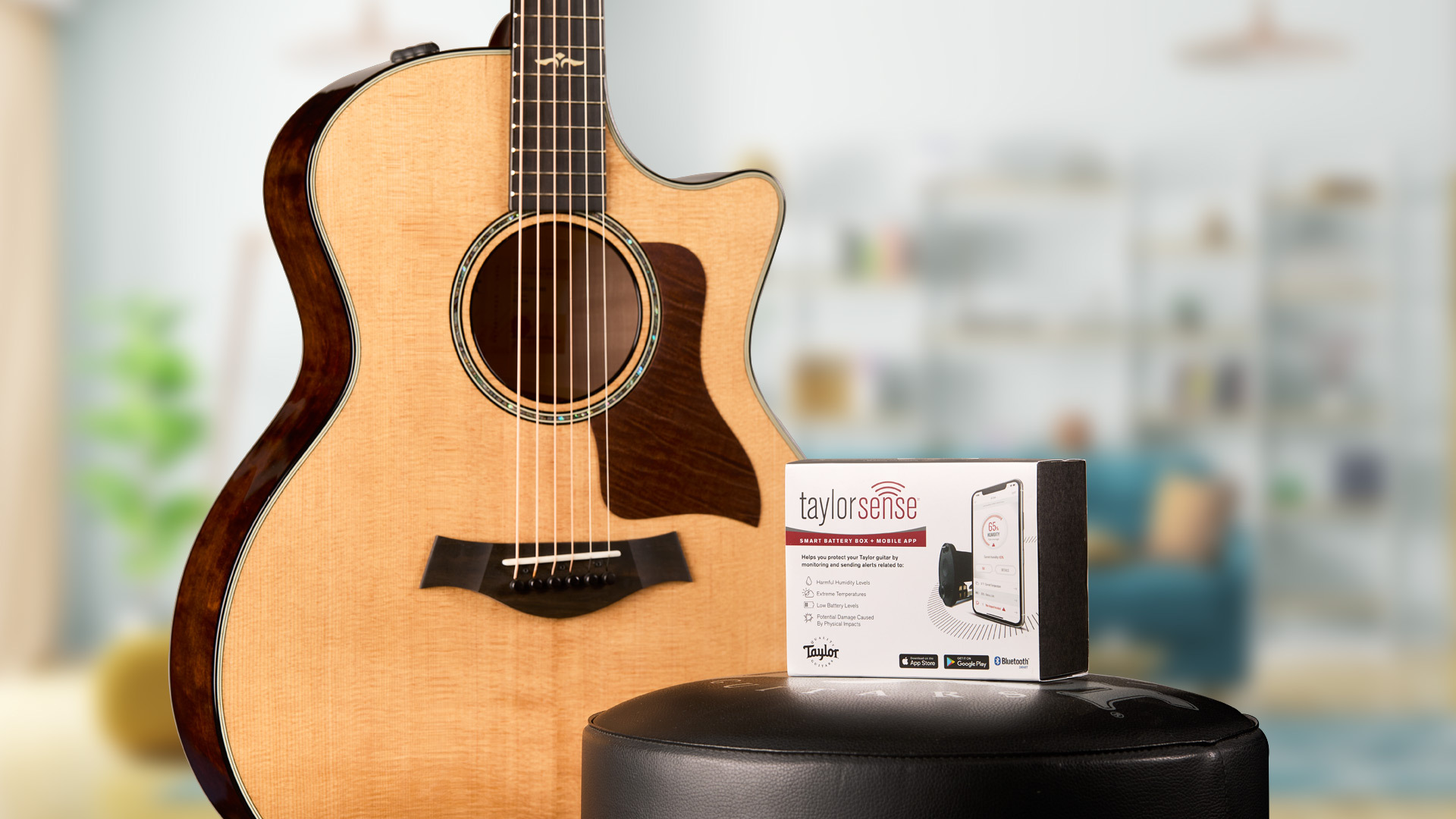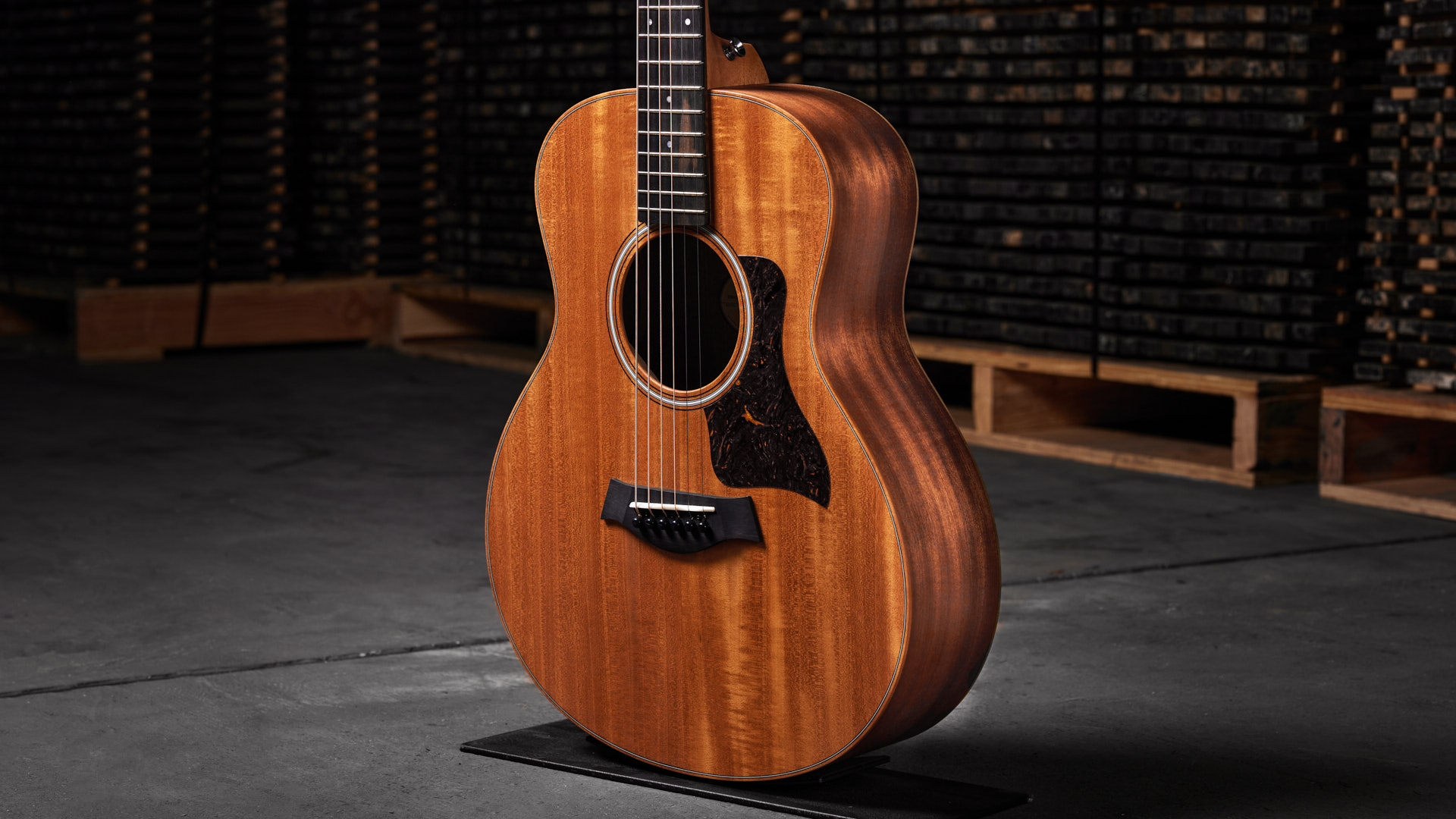Editor’s Note: For this special GS Mini issue of Wood&Steel, we’ve included a few pieces that originally appeared in previous issues. This article highlights two model offerings from early 2023. While the Special Edition Caramel Burst model is no longer in production, the GS Mini-e Rosewood Plus is available at dealers everywhere.
If you ask any guitarist around the world whether they’ve played a Taylor, you’re likely to get some version of this answer: “Yeah, I love the GS Mini.”
There’s just something about the Mini’s blend of curvy contours and scaled-down size, balancing the comfort and portability of a travel guitar with the bold sound of a full-size instrument. It’s fun and inviting, unpretentious, and in many ways, the ultimate everyday, take-me-anywhere guitar.
That broad “couch to campfire to the concert hall” appeal also makes the GS Mini Series a creative playground for our guitar designers, who get to explore available stocks of tonewoods and new feature ideas for fresh combinations of sound and aesthetics to deploy. That’s why there always seem to be a couple of interesting new GS Mini prototypes on guitar hooks in our product development meeting room at the Taylor factory.
This year, two new models join our diverse family: the GS Mini-e Rosewood Plus and the GS Mini-e Special Edition Caramel Burst.
GS Mini-e Rosewood Plus

Back/Side Wood: Layered Indian Rosewood
Top Wood: Sitka Spruce
Neck: Neo-Tropical Mahogany
Fretboard: West African Crelicam Ebony
Nut Width: 1-11/16”
Scale Length: 23-½”
Electronics: ES2
Guitar Protection: Brown AeroCase
Rosewood Refined
The GS Mini Rosewood introduced layered rosewood to our family of short-scale guitars, and it’s been a hit with players of virtually every type. Rosewood’s rich visual character and mottled chocolate hues make a bold visual statement, and when paired with a solid Sitka spruce top, the guitar delivers a punchy, vibrant sound that performs beautifully in almost any application.
Now, we’re elevating that presentation with the new GS Mini-e Rosewood Plus, bolstering that layered rosewood/solid spruce pairing with premium aesthetic and performance enhancements.
Like its counterpart in the GS Mini family, the GS Mini-e Koa Plus, this model sports a gloss-finish body (upgraded from the standard matte finish), giving it a lustrous sheen that’s worthy of the stage. Nickel tuning machines replace the standard die-cast chrome tuners from the standard edition, adding a subtle touch that dials up the Plus model’s aesthetic character.
The most notable performance upgrade is the inclusion of ES2 electronics, which replace the ES-B pickup and preamp unit that comes standard in most GS Mini guitars. The ES2, our behind-the-saddle acoustic pickup featured in the vast majority of our American-made full-scale guitars, is precisely configured to deliver clarity and balance for plugged-in applications, letting you run your GS Mini through an amplifier or PA for a sound that’s totally faithful to its acoustic resonance and sparkle. The GS Mini-e Rosewood Plus features the standard three-knob, volume-bass-treble controls found in other ES2-equipped guitars.
We’ve also upgraded the carrying case for the new Plus model from a padded gig bag to our AeroCase, an innovative, ultra-light bag/case hybrid that offers the protection of a traditional hardshell case at one-third the weight.
GS Mini-e Special Edition Caramel Burst

Back/Side Wood: Layered Sapele
Top Wood: Sitka Spruce
Neck: Neo-Tropical Mahogany
Fretboard: West African Crelicam Ebony
Nut Width: 1-11/16”
Scale Length: 23-½”
Electronics: ES-B
Guitar Protection: Tan Structured Gig Bag
Candy Caramel
Taylor fans have seen a lot of interesting burst finishes introduced across our guitar line in recent years, and this year’s GS Mini-e Special Edition Caramel Burst adds another distinctive visual flavor to the mix.
This model features backs and sides of layered sapele paired with a solid Sitka spruce top, a time-tested wood combination that yields clear, dynamic sound suited to a wide range of playing styles and genres.
The top’s Caramel Burst transitions from rich, tawny brown around the outer edges to a sweet ochre hue around the soundhole. A thin matte finish gives the burst a rootsy, vintage flair.
Other standard features include a structured tan gig bag with backpack straps for hands-free carrying convenience and our ES-B electronics with a built-in digital tuner, volume control and three-band EQ.
Look for both of these new GS Mini models and others within the series at a Taylor dealer near you.


